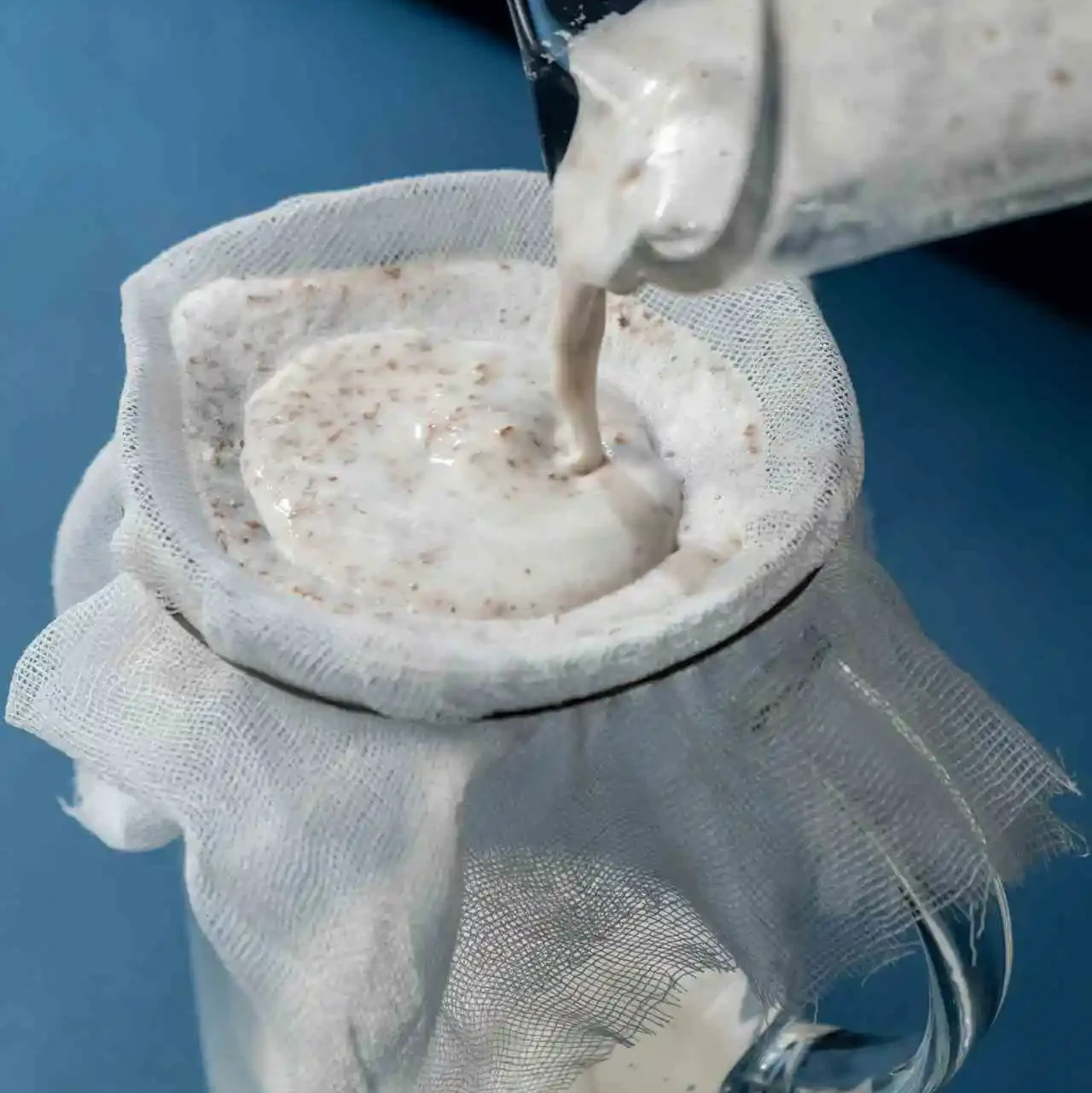How to Strain Juice without a Strainer?

Straining juice without a strainer might seem tricky at first, but with a little creativity, it’s surprisingly simple.
Methods like using a cheesecloth, coffee filter, or even a clean kitchen towel can help you achieve the same smooth, pulp-free juice.
Trying these methods shows how useful your kitchen tools can be. Improvising in cooking not only fixes issues but also makes it more fun. If you don’t have a strainer, just use what you have and enjoy your juice!
How to Strain Juice without a Strainer?
Straining juice removes pulp, seeds, and other solid particles, resulting in a smooth and refreshing beverage.
These simple methods deliver smooth, pulp-free juice with minimal effort.
1. Using a Cheesecloth

A cheesecloth is a fantastic substitute for a strainer. Its fine weave makes it perfect for separating solids from liquids.
These clothes are reusable, easy to clean, and widely available in kitchen stores.
How to use
1. Place the cheesecloth over a bowl or pitcher.
2. Pour the juice slowly onto the cloth to catch all the solids
3. Gather the edges of the cloth and twist to squeeze out the liquid, applying gentle pressure to extract as much juice as possible.
4. Wash and dry the cheesecloth for future use.
2. Coffee Filter or Tea Strainer

Coffee filters are designed for fine filtration, making them ideal for straining juice in small batches.
This method is particularly suited for clear juices like apple or grape juice.
How to Use
1. Place a coffee filter in a funnel or over a jar.
2. Pour the juice slowly and allow it to drip through, separating the pulp.
3. Gently stir or press the pulp with a spoon if needed.
4. Enjoy smooth juice and clean up easily by washing or discarding the filter.
3. Fine Mesh Sieve or Colander with Cloth
If you have a colander or a coarse sieve, combine it with a thin cloth to achieve finer filtration.
How to Use
1. Line the colander with a clean cloth or even a large coffee filter.
2. Place it over a bowl to catch the liquid.
3. Pour the juice through and press down with a spoon or spatula to speed up the process.
4. Clean Kitchen Towel
A clean, thin kitchen towel can work similarly to a cheesecloth.
Ensure the towel is free from detergents or fragrances that might affect the taste of your juice.
How to Use
1. Lay the towel over a bowl or container.
2. Pour the juice carefully onto the towel, ensuring it doesn’t overflow.
3. Lift the towel and gently twist it to extract the juice, pressing firmly but carefully.
5. Use a Fork and Spoon Technique
For small amounts of juice, this method can work in a pinch.
How to Use
1. Hold a fork over a bowl and pour the juice slowly, letting the fork catch more extensive solids.
2. Use a spoon to press the pulp against the fork to extract additional liquid.
Why do we need to Strain the Juice?
Straining juice is done for several reasons, and the decision to strain or not depends on personal preferences, the type of juice being made, and the desired characteristics of the final product.
Here are some reasons why straining juice is often considered beneficial:
1. Texture and Consistency
Straining juice removes solid bits and pulp, making it smoother and more even in texture.
This is perfect for people who like their juice to be clear and flow like a liquid without any chunks.
2. Removal of Undesirable Flavors
Straining removes bitter tastes, seeds, and other unwanted flavors from fruits and vegetables.
This makes the juice taste smoother and more delicious.
3. Versatility
If you want it smooth without any pulp, or with a bit more texture, straining helps you customize it to match your taste.
4. Juice Clarity
Straining is commonly employed in processes like cold-press juicing to improve the clarity of the juice.
Clear juices are often associated with freshness and quality.
Frequently Asked Question
Can I use a coffee filter to strain juice?
Yes, coffee filters work well for straining the juice. Set up the coffee filter over a cup or bowl, pour the juice through, and the filter will catch the pulp.
How do I maintain the nutritional value of the juice when straining?
To retain more fiber and nutrients, consider using a method that allows some pulp to pass through, such as a fine mesh sieve. Alternatively, reserve some of the pulp and mix it back into the strained juice.
Conclusion
When you find yourself without a strainer, these methods offer a simple solution using everyday items. By using a cheesecloth, coffee filter, or clean kitchen towel, you can effectively separate the juice from the pulp.
These alternatives are not only practical but also demonstrate how you can creatively use common kitchen tools.
This approach encourages you to be resourceful and shows that you don’t need specialized equipment to enjoy fresh juice.